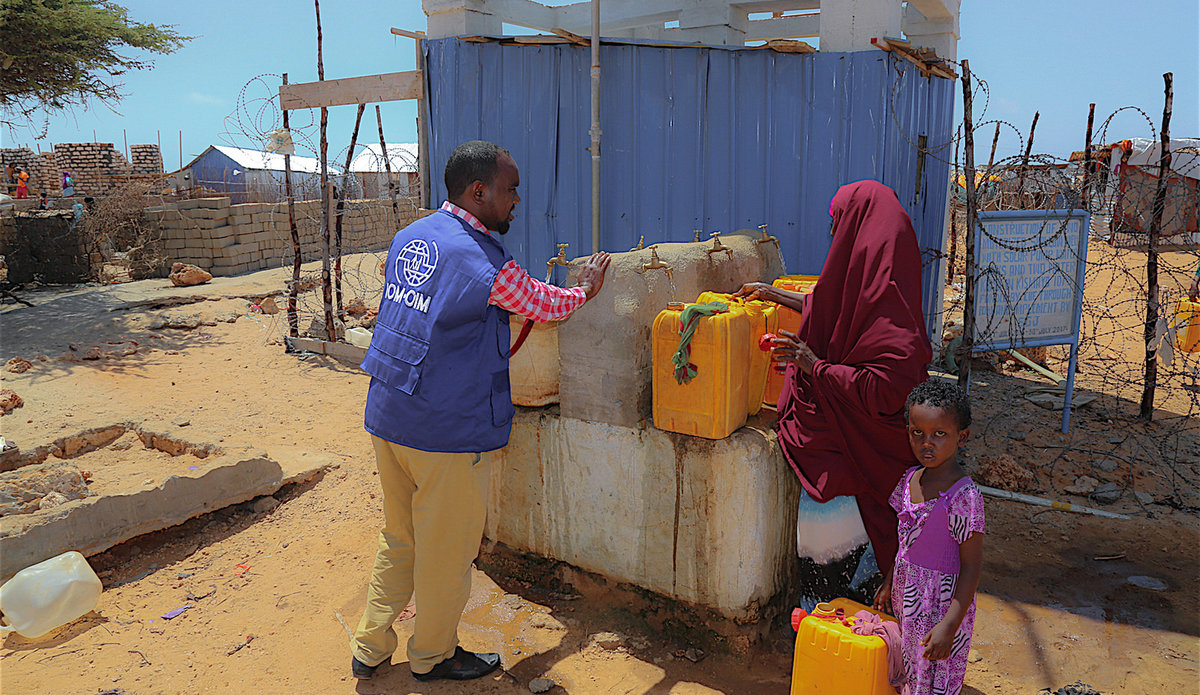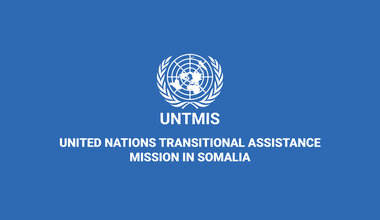Aid Worker Dispatches: Saving Lives in Jubbaland
On a hot, flat, stony plateau outside Kismaayo, hundreds of people pack into a settlement for internally displaced persons (IDPs). Bashir Muhamed Muktar stands at a water point, helping weary ladies lift jerry cans of water. Over the last five years, he has witnessed a raft of humanitarian crises that have affected many communities in Somalia’s Jubbaland state. Mr. Muktar could have easily opted for another profession but decided to work as a humanitarian aid worker in one of the harshest environments in the country.
“My passion has all along been to aid the poor and the vulnerable, to ensure they have a better life. I was born and raised in a poor community, and this is how I give back to society,” he says.
The port city of Kismaayo, where Bashir works with the United Nations’ International Organization for Migration (IOM), hosts a large population of vulnerable individuals – local residents, people displaced by the prolonged drought and conflict in various parts of the country, as well as refugees returning home from neighbouring countries.
“Our activities picked up early this year, when people we work for needed food, shelter, water and sanitation, and medical services,” Bashir explains. “We had to act urgently to save lives and avert a looming famine.”
Dedicated and timely interventions of humanitarian workers like Bashir made it possible for more than 3 million Somalis to be reached every month with life-saving assistance and livelihood support. The recent drought, for example, affected more than six million people and displaced more than 800,000, leading to an influx of arrivals in major cities like Kismaayo, Baidoa and the capital Mogadishu.
“I witnessed human suffering of the highest magnitude: emaciated children, mothers exhausted by the drought, fathers too weak to provide for their families,” says the aid worker.
Although needs remain critical, Bashir is happy that the emergency response averted a major humanitarian disaster, and actually saved hundreds of lives of vulnerable individuals living inside and outside IDP camps.
Despite the drive and commitment to reach as many vulnerable populations as possible, there are challenges that make humanitarian work difficult, risky and sometimes frustrating. The number of those in need often exceeds available resources.
“Our major challenge is the lack of adequate funds to meet the needs of the vulnerable population. We struggle to reach as many people as possible, and humanitarian crises are becoming more frequent on the continent,” Bashir notes.
Bashir says IOM will continue projects to improve the lives of vulnerable migrants and their host communities. In Kismaayo, the organization runs four health centres in Dalxiiska, Alanley, Guulwade and Fanoole villages where some of the most vulnerable populations are found. IOM also implements projects focusing on water, sanitation and hygiene (WASH), displacement tracking, shelter and non-food items (NFIs), food security and protection, border management, and institutional capacity building.
 UN
UN





